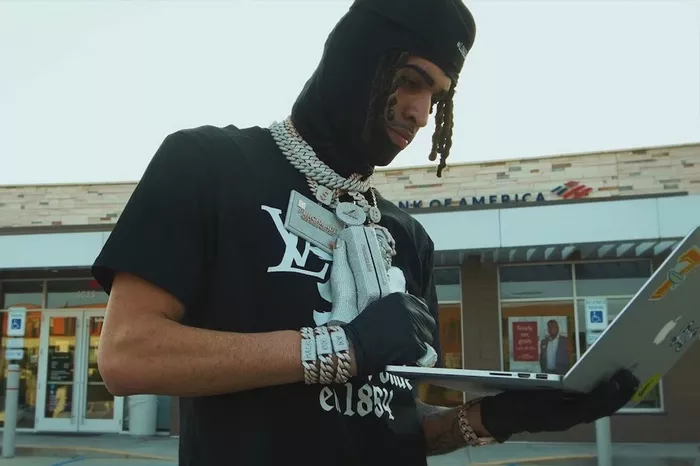In the vibrant tapestry of music history, the rise of rap music stands as a cultural milestone. Rooted in the expressive narratives of African American communities, rap emerged as a powerful form of artistic expression and social commentary. However, the journey of early rap music was not just about its creation but also about how it reached its audience. This article delves into the fascinating world of early rap music distribution, exploring the methods, challenges, and impact of bringing this genre to the masses.
The Birth of a Movement
Hip-Hop’s Genesis: The early days of rap music are closely intertwined with the birth of hip-hop culture. Originating in the Bronx borough of New York City in the 1970s, hip-hop encompassed not just music but also elements like graffiti art, breakdancing, and DJing. It was within this cultural cauldron that rap found its voice, with artists using rhymes and beats to convey stories of urban life, struggle, and triumph.
Underground Origins: In its nascent stages, rap music thrived in underground spaces such as block parties, clubs, and community centers. These were the grassroots venues where MCs (Master of Ceremonies) would showcase their lyrical prowess, often accompanied by DJs spinning vinyl records. These gatherings served as incubators for talent and creativity, shaping the early sound and style of rap.
1. From Street Corners to Record Stores
Mixtapes: The DIY Revolution
One of the earliest forms of rap music distribution was through mixtapes. These were homemade compilations of tracks recorded onto cassette tapes. DJs and MCs would create mixtapes featuring their own performances or collaborations with other artists. These tapes were then sold or traded among fans, creating a DIY distribution network that bypassed traditional record labels.
Local Radio and DJ Culture
Radio also played a pivotal role in spreading early rap music. Local radio stations, especially those with shows dedicated to hip-hop and rap, provided a platform for artists to reach a wider audience. DJs like Kool Herc, Grandmaster Flash, and Afrika Bambaataa became influential figures, not just for their mixing skills but also for their ability to break new tracks and artists on the airwaves.
Underground Distribution Networks
In addition to official channels, underground distribution networks played a significant role in spreading rap music. Bootleg copies of albums and mixtapes circulated through informal networks, often reaching fans who didn’t have access to mainstream distribution channels. These underground channels were instrumental in building fan bases and creating buzz around emerging artists.
Independent Record Labels
As rap music gained momentum, independent record labels emerged as key players in its distribution. Labels like Sugar Hill Records, Profile Records, and Def Jam Recordings were instrumental in signing and promoting early rap artists. They helped bring rap music from the streets to the shelves of record stores, expanding its reach beyond local scenes.
2. The Rise of Music Videos and MTV
Visualizing the Message
The advent of music videos revolutionized how rap music was consumed and distributed. Artists began creating visually captivating videos to accompany their tracks, blending storytelling with performance art. This visual medium not only enhanced the music’s appeal but also opened new avenues for exposure through television.
MTV: A Cultural Phenomenon
MTV (Music Television) played a significant role in popularizing rap music during the 1980s and 1990s. The channel’s programming, including shows like “Yo! MTV Raps,” showcased rap videos to a global audience. This exposure catapulted rap artists into mainstream consciousness, paving the way for widespread recognition and commercial success.
3. Embracing Digital Innovations
The Digital Revolution
The digital revolution transformed rap music distribution in the late 1990s and early 2000s. The rise of the internet, digital downloads, and online streaming platforms revolutionized how music was consumed and distributed. Artists could now reach global audiences instantly, bypassing traditional record labels and distribution networks. Platforms like SoundCloud, YouTube, and later, streaming giants like Spotify and Apple Music, became essential for rap artists to connect with fans and monetize their music.
Social Media and Viral Marketing
Social media platforms like MySpace, Twitter, and later, Instagram and TikTok, became powerful tools for promoting rap music. Artists could connect directly with fans, share new releases, and build their brand identities online. Viral marketing campaigns, fueled by user-generated content and influencer endorsements, propelled rap songs and albums to viral status.
Conclusion
Early rap music distribution exemplifies the ingenuity and resilience of artists and communities in navigating the music industry’s evolving landscape. From grassroots movements to digital revolutions, rap music has continuously adapted and thrived, shaping not just musical trends but also societal conversations. Understanding its distribution history provides valuable insights into the transformative power of music in shaping culture and identity.

